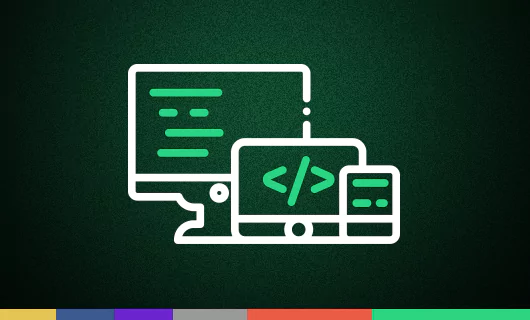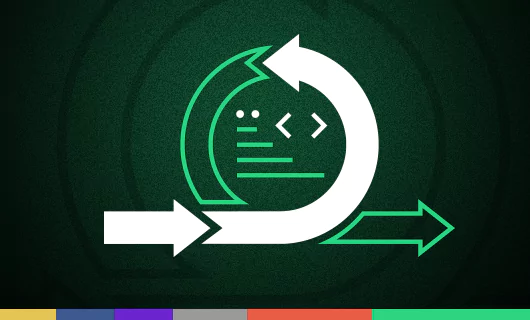In general, software development models are the processes and methodologies selected for app development keeping in mind the goals and objectives of the project. These models define the flow in which a specific project needs to be carried out.
What is Software Development Life Cycle (SDLC)?
The Software Development Life Cycle (SDLC) is the process of planning, designing, developing, testing, and optimizing software. One of the major aims is to develop a high-quality app at a lower cost and shortest time frame.
The Software Development Life Cycle (SDLC) is a structured process that makes it possible to create high-quality, inexpensive software as quickly and efficiently as possible. The SDLC aims to produce excellent software that satisfies and exceeds all stakeholder and end-user expectations.
Thanks to the SDLC, the requirements can be examined by developers working on the project. It helps developers save money during the development process. Early in the SDLC, developers can estimate expenses and identify additional roadblocks and future costly problems. Better digital products can be made using such an approach.
Types of Development Models and for what project you should use them
Different software models contribute differently to each project and impact the project’s quality, timeline, budget, and other aspects significantly.
Waterfall Model
When developers start working on a project, the Waterfall Model is their first approach to development. The Waterfall Model moves down in a structured manner through linear development stages.
Various stages include analysis, design, development, testing, deployment, and app maintenance. Waterfall Model can be used for small and one-time projects that require less flexibility.
With linear interpretation, the Waterfall Model is appropriate for developers who have a clear idea of what they want to achieve. Since this model is linear, it’s not flexible and developers cannot move on to the next stage until the current stage completes.
V-model
The V-model (Verification and Verification model) is another popular software development model that supports quality management methods. It explains how different stages will interact with each other.
Instead of moving linearly, the model moves down until it reaches the coding phase and once it pivots, it begins to move upwards, forming a V Structure. The V-model is an ideal option for short time projects with fixed goals.
Each development stage in the V-model has a specific testing activity. It allows the development teams to detect an error in code, requirement specifications, and architecture. However, it’s still challenging to fix errors as no clear method is available for error handling.
Incremental and Iterative model
The Iterative (and Incremental) model is designed primarily to eliminate the shortcomings of the Waterfall Model. The model begins with project planning and ends with software deployment. It includes looping cycles throughout the process.
Developers can iterate the product at different stages of development based on their learnings from the previous phase. The model is not appropriate for projects where specific requirements are subject to change during iteration.
The iterative nature of the software model makes it easy to implement changes at any stage without must worrying about the outcomes. At the same time, the iterative nature can pose several risks such as unknown costs frequent changes, and uncertain deadlines.
Prototyping Model
The Prototyping model is based on the development team’s understanding of the audience’s needs. By developing a prototype or a small functional replica of the project, the project can easily resolve the misunderstanding and miscommunications that can pose a risk later.
Before initiating the project, the developers create a prototype of the actual program based on their understanding of customer expectations. The model is ideal for cost-intensive projects as building a small replica saves cost.
The model, when implemented in a software development project reduces the need for frequent iterations that saves time, effort, and money. The only drawback can be that developers cannot make iterations after the final prototype is developed.
Spiral Model
Based on risk assessment, the Spiral Model demands in-depth knowledge and a wider skillset to make the project a success. The model works in different phases that include planning, risk analysis, engineering, and evaluation.
With this model, even the most basic software development process takes around six months to complete successfully. The model is applicable to projects that have frequent software releases.
A continuous development process allows developers to add more innovative features. Systematic development procedure streamlines the software development process. Due to a varied number of loops, it involves the risk of exceeding the budget.
Agile approach in IT projects
The agile approach in software development is based on 12 top-tier principles that define the mindset rather than displaying a set of rigid protocols. The approach is designed to deliver highly functional software effectively and efficiently.
The group of software development methodologies makes the entire project easy to handle for developers. With a focus on quality coding, it is best for projects that have a clear objective and audience. Let’s have a look at popular agile methodology development models.

Agile Methodology Development Models
Simply described, agile modeling is a group of beliefs, concepts, and practices for modeling software that may be used practically and efficiently on software development projects.
Each Agile model assumes that every project should be managed differently, and existing methods should be adjusted to better meet the project’s demands.
SCRUM
Software development projects that are based on the Scrum technique value experience, intellect, and skill set of the development team. Different project activities are handled in cycles called sprints.
The overall software development is well-organized and easily manageable. Since developers feel dedicated to the project goals, this software development methodology applies to apps with larger initiatives.
Organized collaboration between the cross-functional development teams, business entities, and customers reduces the guesswork. If too many features and Functional updates are made to the product, teams may risk deadline exhaustion.
KANBAN
KANBAN is an agile software development methodology with unplanned iterations. If the development team plans to iterate the process or any of its phases, probably to add more features and functions, they are in the form of sprints.
A board called the KANBAN board is used to outline the project requirements and details. This allows teams to focus on significant features of the project. This model is appropriate for the project with no undefined processes.
Since the project is based on the method of sticky notes, it keeps the team focused and eliminates any unnecessary steps and stages. The lack of a timeframe can be the only downside of the KANBAN approach.
Extreme Programming (XP)
XP model allows developers to implement changes even after the initiation of the iteration process. The process is time-consuming as it normally takes anywhere between 7 to 10 days to implement one iteration.
The Extreme Programming model is based on four major phases including planning, encoding, testing, and launch. It is ideal for projects that are open to constant communication.
The best thing about the Extreme Programming model is that communication between the development team and the client is always open. As mentioned above, it is a time-intensive approach.
Which Software Development Model is the Best for Your Project?
Selecting an appropriate model for software development projects demands analysing the business needs, budget, and final outcomes. It is recommended to hire an experienced software development team to pick the best model for your next project.
Scalo is a world-class software development company offering ready-to-use and custom solutions with an attractive, user-friendly frontend and feature-rich backend. We help clients all over the world step out on the digital market. We currently hire over 600 software developers, located in 4 development centers.
For the last 15 years, we have been delivering reliable software to help our clients scale their growth with top-notch technology. Scalo’s bespoke software development services include a wide portfolio of user-centric solutions perfectly tailored to our clients’ needs. Reach out and find out more.





